Austin, TX Pollen and Allergy Report for Summer 2023
Pollen Allergy Trends in Austin, TX
When is pollen lowest in Austin, TX?

February
Lowest month total PPM
Avg. PPM
When is pollen highest in Austin, TX?

March
Highest month total PPM
Avg. PPM
How does pollen in Austin, TX compare to Texas?
Austin has a higher average PPM than the state of Texas.
Austin yearly avg PPM:
Texas yearly avg PPM:
How does pollen in Austin, TX compare to the USA?
Austin has a higher average PPM than the USA.
Austin yearly avg PPM:
USA yearly avg PPM:
Is pollen worse this year in Austin, TX?
Spring 2023 was worse than spring 2022.
Spring 2023 PPM:
Spring 2022 PPM:
Average PPM in Austin, TX
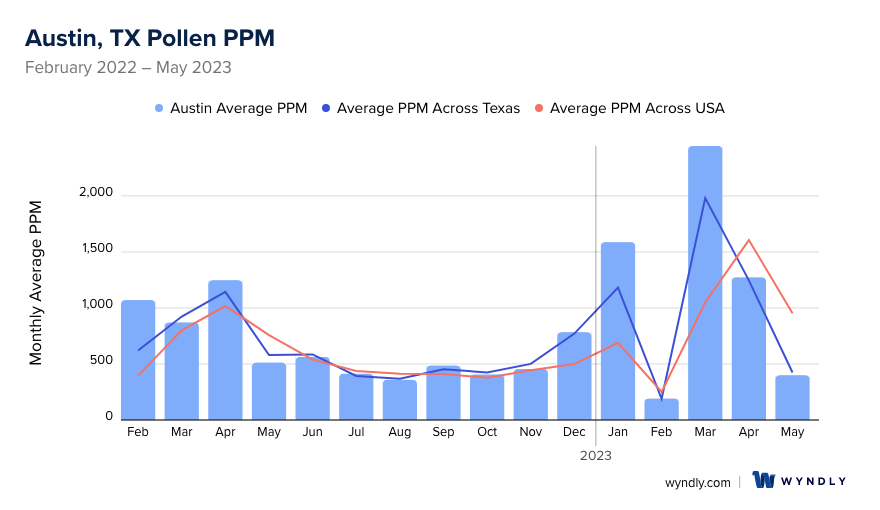
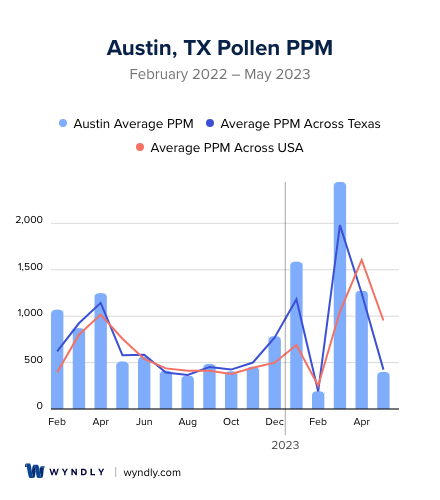
Austin, TX Pollen and Allergy Breakdown by Month
Grass
When is grass pollen highest in Austin, TX?
February has the highest grass pollen in Austin, TX with an average PPM of
When is grass pollen lowest in Austin, TX?
December has the lowest grass pollen in Austin, TX with an average PPM of
Tree
When is tree pollen highest in Austin, TX?
March has the highest tree pollen in Austin, TX with an average PPM of
When is tree pollen lowest in Austin, TX?
November has the lowest tree pollen in Austin, TX with an average PPM of
Weed
When is weed pollen highest in Austin, TX?
June has the highest weed pollen in Austin, TX with an average PPM of
When is weed pollen lowest in Austin, TX?
February has the lowest weed pollen in Austin, TX with an average PPM of
Austin, TX Pollen Monthly Breakdown by Pollen Type
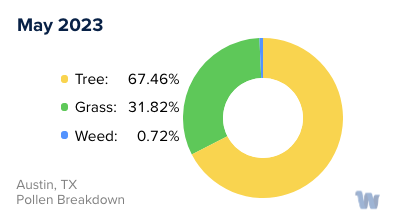
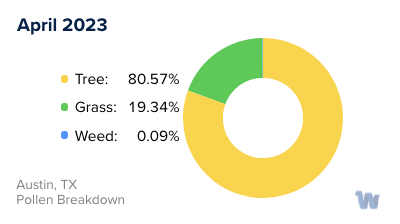
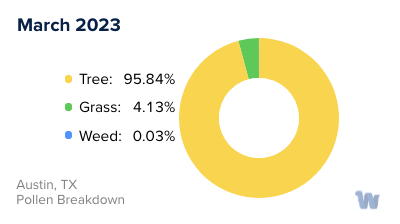
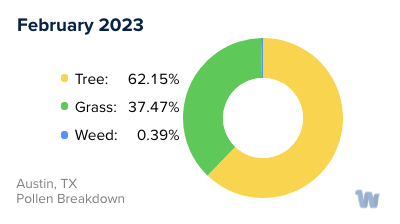
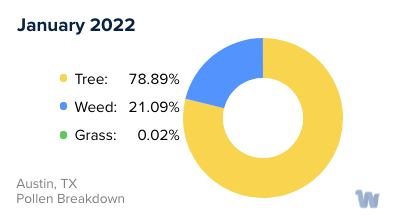
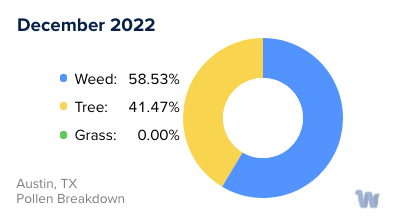
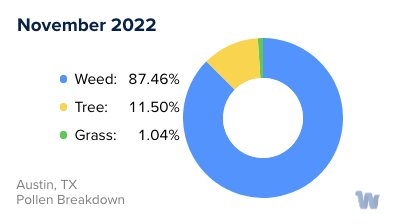
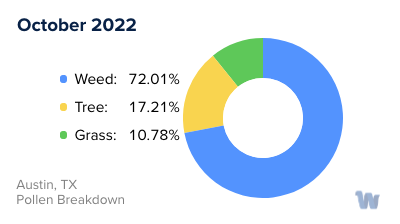
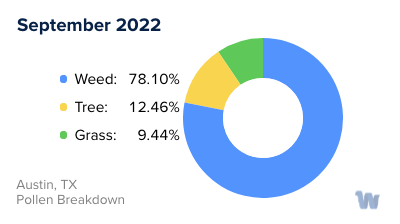
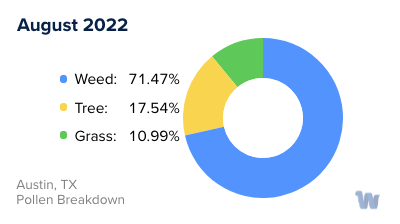
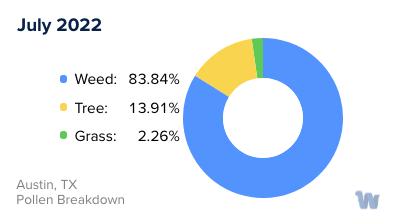
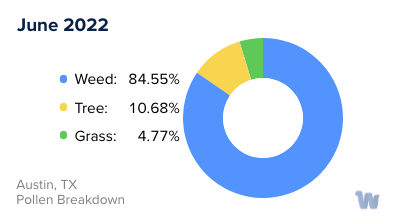
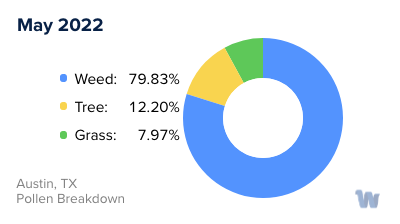
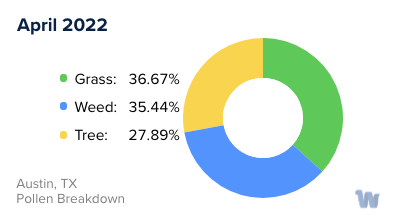
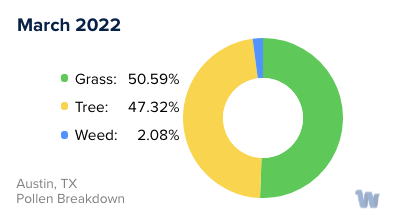
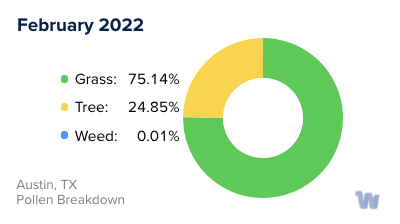
Pollen and Hay Fever in Austin, TX
Austin, Texas, is a vibrant city that attracts residents and tourists alike with its rich culture and natural beauty. However, it's also a place where pollen allergies are a frequent concern, often leading to hay fever symptoms. Seasonal allergies in Austin are primarily triggered by a variety of plant pollens from grasses, trees, and weeds, including Bermuda grass, Timothy grass, Sweet vernal grass, Ragweed, Cedar trees, Hackberry, Willows, Oak, Elm, Ash, Pecan trees, and Cottonwood trees.

